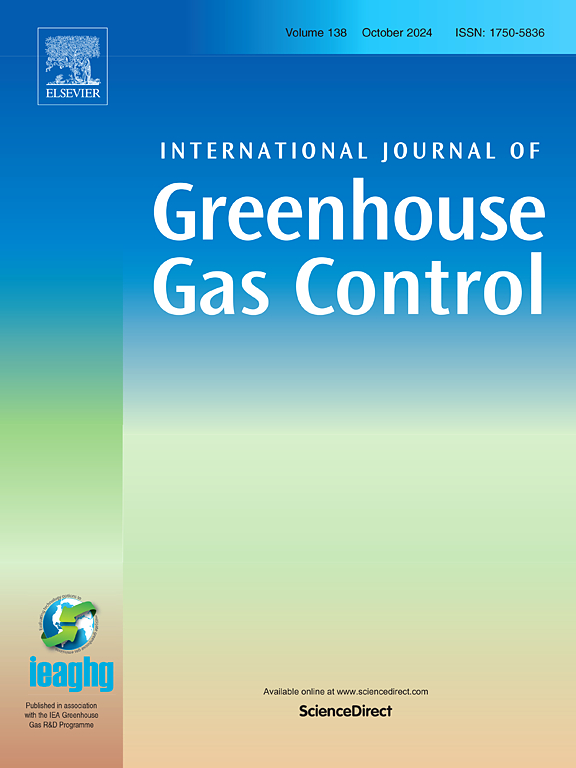Techno-economic performance of enhanced sodium carbonate-based CO2 capture process
IF 4.6
3区 工程技术
Q2 ENERGY & FUELS
International Journal of Greenhouse Gas Control
Pub Date : 2025-02-01
DOI:10.1016/j.ijggc.2025.104310
引用次数: 0
Abstract
A simulation model was developed, and a techno-economic analysis (TEA) was conducted for a novel carbon dioxide capture process based on sodium carbonate solution. The key innovation in this process is the incorporation of a microbubble generator, which significantly enhances mass transfer and improves reaction rate. The model, based on prior experimental data, was used to evaluate CO2 capture costs for the non-optimized base case, identify key cost factors, and assess potential process improvements.
The base case capture cost was estimated at EUR 114–133/tCO2, which is higher than typical costs for amine absorption. The high costs are largely due to the high liquid flow rates required for efficient mass transfer and the need to maintain low solution concentrations to prevent salt precipitation. A notable advantage of the process is its low-temperature regeneration (∼65 °C), which enables the use of waste heat. When waste heat is available at no cost, capture costs could be reduced by EUR 30–40/tCO2. The use of a heat pump was found to be economically favorable when heat costs exceed EUR 13–20/MWh, depending on electricity prices. Increasing absorption pressure and temperature were found to be promising means for improving the process performance.
求助全文
约1分钟内获得全文
求助全文
来源期刊
CiteScore
9.20
自引率
10.30%
发文量
199
审稿时长
4.8 months
期刊介绍:
The International Journal of Greenhouse Gas Control is a peer reviewed journal focusing on scientific and engineering developments in greenhouse gas control through capture and storage at large stationary emitters in the power sector and in other major resource, manufacturing and production industries. The Journal covers all greenhouse gas emissions within the power and industrial sectors, and comprises both technical and non-technical related literature in one volume. Original research, review and comments papers are included.

 求助内容:
求助内容: 应助结果提醒方式:
应助结果提醒方式:


